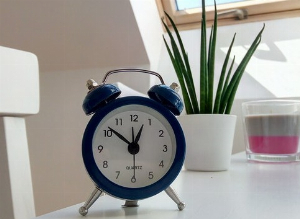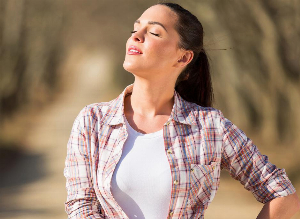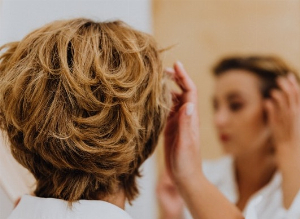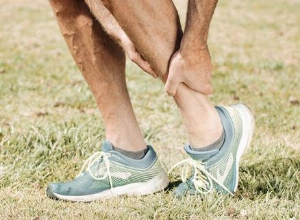COVID-19: What are the "side effects" of wearing a mask?
Published 22 Mar 2021 • By Candice Salomé
Across the UK wearing a mask is recommended or mandatory in indoor environments, but also in many outdoor locations. Face masks are an essential tool in the fight against COVID-19 and are now a part of our daily lives. However, wearing a mask can cause certain issues for many people who report experiencing certain adverse effects.
What are the "side effects" of wearing a face mask? What solutions can be implemented?
We explain it all below!
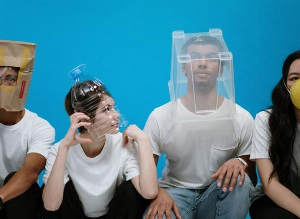
In light of the COVID-19 pandemic, wearing a mask is an essential part of both protecting ourselves and others. But it can sometimes be difficult to bear: acne, redness, migraine, breathing issues and more... However, every problem has its solution!
Skin issues
Masks can irritate the face, because facial skin is particularly thin and sensitive. People who already have skin problems such as acne, rosacea or psoriasis may find that they worsened by their face mask. Masks also tend to encourage sweating and hinder the flow of sebum, which eventually clogs the pores in the skin.
Should certain masks be chosen over others?
Whatever the type of mask, wearing it can lead to skin discomfort. The aim, therefore is to limit the negative effects they can cause by choosing the type that is best suited to your skin.
To limit chafing, you can opt for masks that tie at the back of the head rather than masks with elastics around the ears that can be too tight if they aren't adjusted properly.
As for fabric masks, it is recommended that you choose breathable materials (such as linen or cotton), making sure that the model chosen meets current standards.
What skincare routine should you follow?
- Cleansing: It is crucial to cleanse your skin regularly, ideally in the morning and at night before bed. Make sure to choose a gentle product that is suited for your skin type.
- Hydration: After cleansing your skin, use a moisturising cream to soothe skin that has been dried out by the mask. You can also buy barrier cream from your local pharmacy. If pimples appear, use an exfoliating cream or a sebum regulator.
- Healing: When signs of rash or redness appear, apply a thermal water or a healing cream to the affected areas.
Finally, let your skin breathe and avoiding heavy make-up!
Dry eyes
If the wire nose bridge of your face mask is not properly placed, meaning that it is pinched over the bridge of the nose, the warm air of your breath can escape through the top of the mask and dry out your eyes. According to Professor Laurent Kodjikian, President of the French Ophthalmological Society, this effect is not dangerous, but may cause discomfort. In case of discomfort, you can purchase artificial tears (eye drops specifically for lubricating dry eyes) from your local pharmacy, which are often more effective than a typical saline solution which dries more quickly.
Migraine
According to Sabine Debremaeker, president of the La Voix des Migraineux ("Voice of Migraine Sufferers") patient association: "Wearing a mask for a long period can trigger a migraine". After having heard from a number of people who experience migraines, she mentions several causes behind this phenomenon:
- Lack of oxygen: Migraine patients need to breathe. Indeed, being in an unventilated room can also trigger a migraine.
Taking a breath of fresh air can sometimes be enough to stop an attack. - Heat: The air from your breath inside the mask is warm, which can sometimes trigger headaches.
- Odours: If reusable masks are used, the smell of washing powder can also trigger a migraine.
Despite these observations, there are as yet no studies showing adverse effects from wearing the mask.
Breathing problems in people with asthma
Some health professionals agree that masks can become bothersome in the long term for people with asthma. However, asthma is not a valid reason to not protect yourself or others with a face covering.
There is no evidence that wearing a face mask can worsen asthma, and a study presented by the American Academy of Allergy, Asthma & Immunology (AAAAI) found that wearing a face mask does not affect oxygen saturation levels or cause a build-up of carbon dioxide, whether the wearer has asthma or not.
There are a few solutions available for asthma patients who find it impossible to wear a face mask for a long period. Face shields are an option, but are designed in fact to protect the eyes, so they are most effective if used in combination with a mask. If wearing a mask is not feasible for you, make sure to select a face shield that either wraps around the sides of the wearer's face and extends below the chin or has a hood.
If you have an age-, health- or disability-related reason to not wear a mask, you are allowed to do so without having to provide written evidence of your condition. You are not required to seek advice or request a letter or certificate from a medical professional justifying your not wearing a mask. Some people may feel more at ease with a card or badge indicating that they are exempt from wearing a mask. You can access premade, printable exemption card templates here.
Although wearing a mask is not always pleasant, it is nevertheless indispensable to limit the spread of the virus, so make sure to stay covered!
Was this article helpful to you?
Share your thoughts and questions with the community in the comments below!
Take care!
Sources:
- Why Face Masks Are Critical for People with Asthma and Allergies During the COVID-19 Pandemic, Allergy & Asthma Network
- Should I wear a mask or face covering?, Asthma UK
- Wearing a mask does not affect oxygen saturation in patients with or without asthma, American Academy of Allergy, Asthma & Immunology
- Le masque peut-il causer des problèmes aux yeux ?, RTL
- Conjonctivite, asthme, intoxication au CO2… Le vrai du faux des effets indésirables du masque, Le Monde
- Port du masque : quels sont les effets réels sur la peau ?, Isispharma
- Masque Covid-19 : quels effets secondaires sur la peau ?, Ducray
- Le port du masque, un casse-tête pour les migraineux, BFM

 Facebook
Facebook Twitter
Twitter




